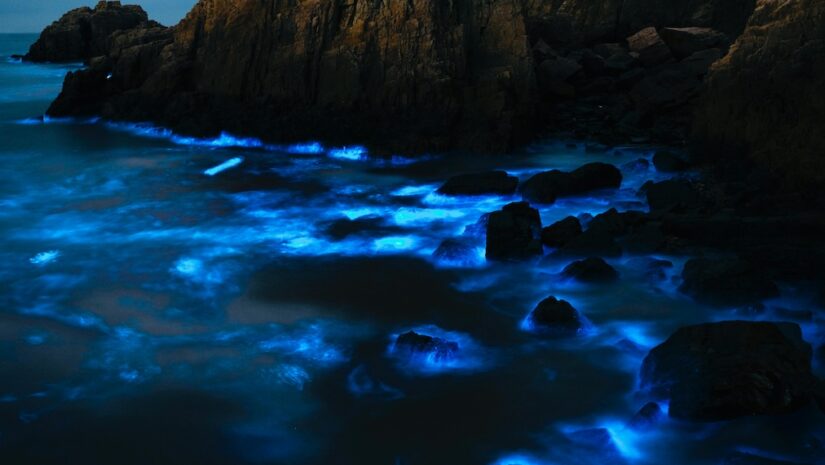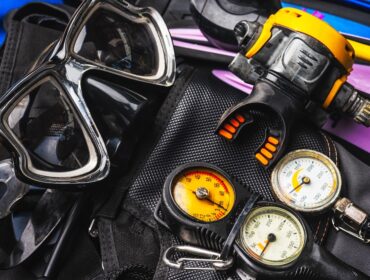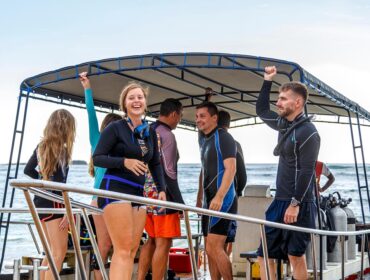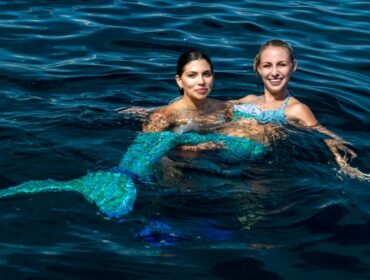Picture the typical wreck dive sites. What do you see? Probably sunlit decks, clear water, and lots of colorful fish. Those daytime dives are great! They are exactly what you expect.
But here’s the secret: the most amazing dives happen after the sun disappears. If you haven’t been underwater at night, you’re missing out on the real thrill.
Ready to try this unique adventure? In this guide, I will explain exactly why night wreck dive sites feel so intense and different, specific gear required, and bucket-list wreck dive sites.
Why night wreck dive sites feel so different

If you already love shipwrecks in the daytime, you’ll love them even more at night. As the sun sets, even familiar wreck dive sites feel totally brand new. The ship’s outline disappears into the shadow. Your dive light cuts out a bright tunnel for you to see. Suddenly, you are exploring a world that feels quiet, mysterious, and much more personal.
At night, you only see what your light is pointing at. You stop looking at the whole hull or the entire top structure. Instead, you focus on one doorway, one ladder, or one rail covered in coral. This is when many divers realize they missed so much during the day. Small animals often only come out after dark. You’ll spot tiny crabs, colorful shrimps, shy eels, and hunting lionfish. They only truly stand out when you slowly shine your light across the wreck.
There’s also a mental thrill. Seeing a huge wreck suddenly appear out of the darkness is intense. Your heart might race for a second! Then your training takes over: you breathe slowly, check on your buddy, and look at your depth gauge. This mix of excitement (adrenaline) and feeling totally in control is what makes divers return to their favorite wreck dive sites again and again.
Also, many of these spots are not too deep. This means night dives are usually easy and give you lots of time to explore. There are also fewer boats around. It is just you, your buddy, and the old ship slowly appearing from the dark water.
Gear you’ll want for after-dark wreck dive sites

You can’t talk about night dives on wreck dive sites without talking about lights — plural. At a minimum, you’ll want a solid primary light and a backup.
Your primary light should be bright enough to cut through the dark and give you a comfortable view of the wreck’s structure. A focused hotspot with a bit of spill is ideal, so you can see both what you’re pointing at and a hint of your surroundings. A backup light is non-negotiable. Clip it where either hand can reach it. If your main torch fails inside a shadowy overhang or passageway, that little backup instantly becomes your favorite piece of gear.
Small marker lights or tank beacons are also helpful at busy wreck dive sites. They let your buddy spot you quickly and make it easier to identify your team in the water. Some dive guides will put a distinctive light on the descent line or mooring so you always know where “home” is.
Because wrecks love to grab anything loose, streamline your setup. Use bolt snaps, bungees, and proper hose routing to keep gauges, octos, and accessories from dangling. A cutting device (like a line cutter or small knife) is a smart extra layer of security in case you meet fishing line, old cables, or bits of net.
Depending on water temperature, you may also want a slightly warmer exposure suit than you’d wear for daytime dives on the same wreck dive sites. Without sunlight and with a bit of breeze on the boat, you can chill faster between dives. Toss in anti-fog, a slate or wet notes for sketching the layout, and maybe a small reel if you’re trained to use one, and you’re set up for a smoother, calmer night experience.
Bucket-List Wreck Dive Sites to Visit at Night

Once you’ve got the skills and gear dialed in, it’s time to think about where to chase those after-dark thrills. Some wreck dive sites are especially famous for night or twilight dives, thanks to their depth, accessibility, and marine life.
USAT Liberty
In Indonesia, the USAT Liberty in Tulamben is a classic starting point. The wreck lies close to shore in relatively shallow water, which makes multiple visits easy. Many divers do a sunrise or night dive here after spending the day mapping out the decks and cargo holds. Seeing the same wreck dive site in different light (literally) helps you build confidence without pushing limits.
Hilma Hooker
In the Caribbean, Bonaire’s Hilma Hooker is another favorite. It rests in comfortable depths and is reachable by shore or boat, which means many operators are happy to organize a night run when conditions are calm. The wreck itself is impressive, but the real magic happens when the nocturnal creatures emerge and the ship seems to “wake up” in a whole new way.
SS Thistlegorm or SS Yongala
More advanced wreck dive sites, like Egypt’s SS Thistlegorm or Australia’s SS Yongala, are sometimes offered as night or very early morning dives on certain liveaboard trips. These tend to be reserved for experienced divers due to currents, depth, and complexity, but they’re the kind of dives that end up on people’s “top five of all time” lists.
Wherever you go, lean on local knowledge. Ask which wreck dive sites are best suited for a first night attempt, what the usual conditions are, and whether there are any special procedures, like fixed lines or one-way swim-throughs.
A Quiet Kind of Adventure

When you zoom out, that’s really what all of this comes down to: finding a quiet pocket of calm in a world that’s always buzzing. Drifting slowly over a wreck at night, hearing nothing but your own bubbles and seeing just what your light reveals, is a pretty special way to do it.
You don’t have to chase depth records or swim into anything that makes you uneasy — just move slowly, breathe evenly, and let the ship and its night crew of creatures come to you.






